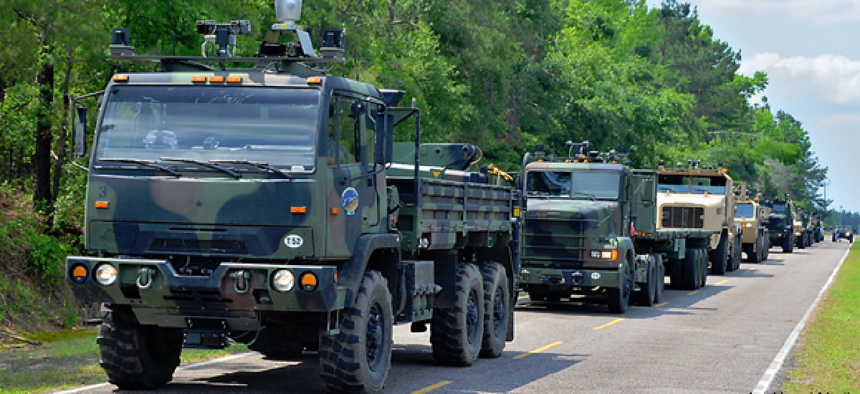Army driverless-truck pilot logs 55K miles

The Autonomous Mobility Applique System trucks had to work through oncoming and passing traffic, negotiating rights of way, barriers and obstacles, dynamic rerouting and pedestrian traffic.
When Tesla announced an all-electric tractor trailer featuring self-driving capabilities, it made headlines. But the Army also hit a milestone last month worth noting.
As part of the Army's Extended Warfighter Experiment, Lockheed's Autonomous Mobility Applique System logged more than 55,000 miles.
The kit-based solution lets soldiers retrofit any vehicle in the military's logistics fleet with sensors, actuators and controls that enable autonomous capabilities.
Soldiers and Lockheed personnel spent several months at Fort Leonard Wood in Missouri and Fort Bliss in Texas putting the driverless technology through its paces.
In one testing scenario, one truck is driven by a person while several other robotic trucks follow. Fully autonomous trucks also were tested.
Lockheed said the AMAS system reduces manpower needs and reduces soldiers’ exposure to the IEDs.
Among the tasks and challenges, the trucks had to work through oncoming and passing traffic, negotiating rights of way, barriers and obstacles, dynamic rerouting and pedestrian traffic.
"AMAS continues to prove itself as a valuable asset for our military by safely operating in complex environments," said Kathryn Hasse, Lockheed’s combat maneuver systems director. "We believe that AMAS is ready to move forward toward the ultimate goal of widespread fielding across multiple military applications."
Her last statement is what caught my eye. That will be a huge step but one that is surely coming.
I’m sure others are working on similar technologies but this Lockheed project reminds me of what an iRobot executive told me years ago. She said they were looking to do the mundane and dangerous.
That is why at the time they were building robotic vacuum cleaners and robots that could be used for disarming bombs. (Note: iRobot spun out its defense work in 2016 to help create Endeavor Robotics.)
Driving a military truck in a combat zone is both of those things at the same time – mundane and dangerous. It might not be as sexy as Tesla tractor trailer but it’s no less noteworthy and significant.
This article was first posted to Washington Technology, a sibling site to GCN.






